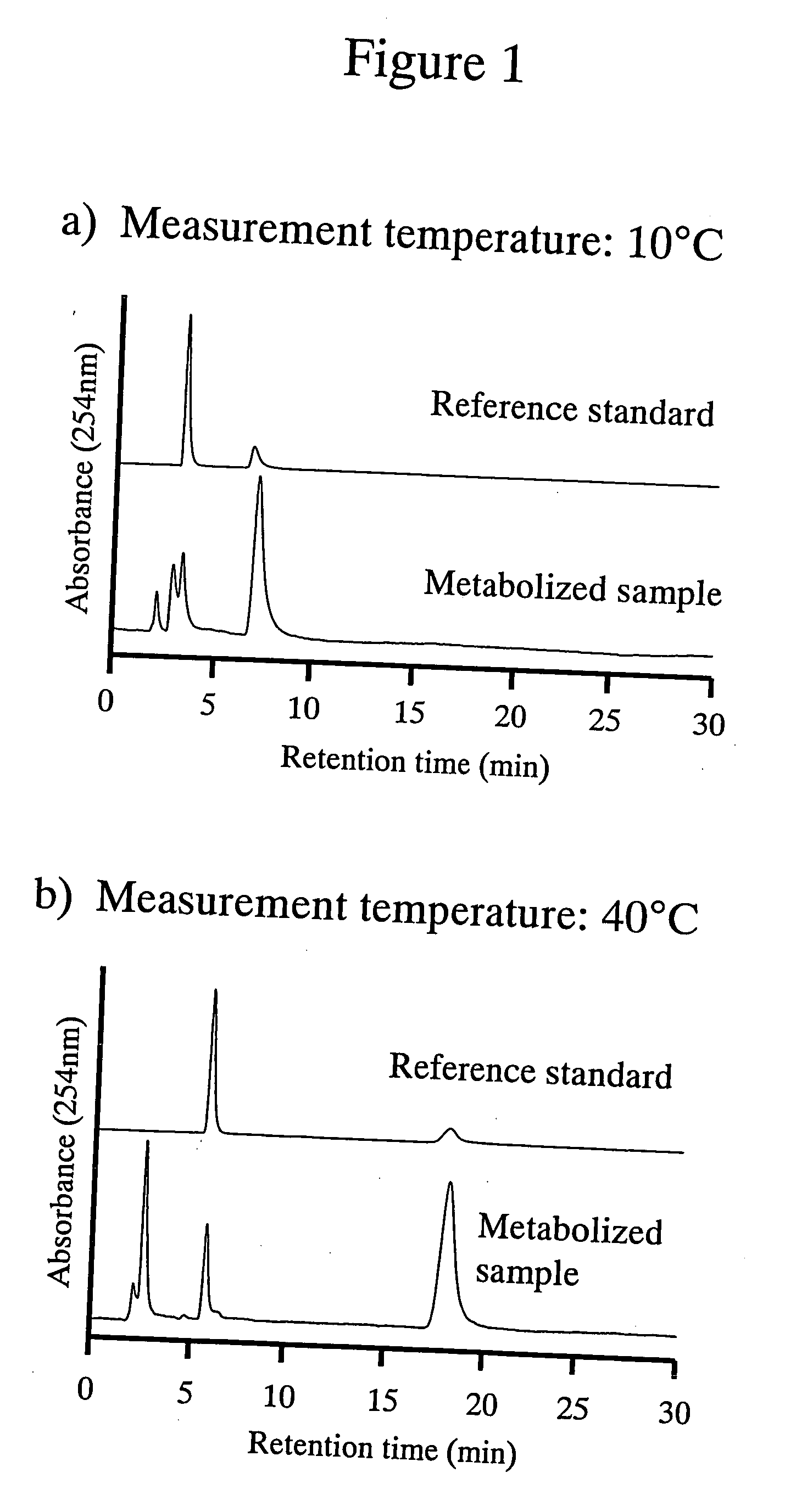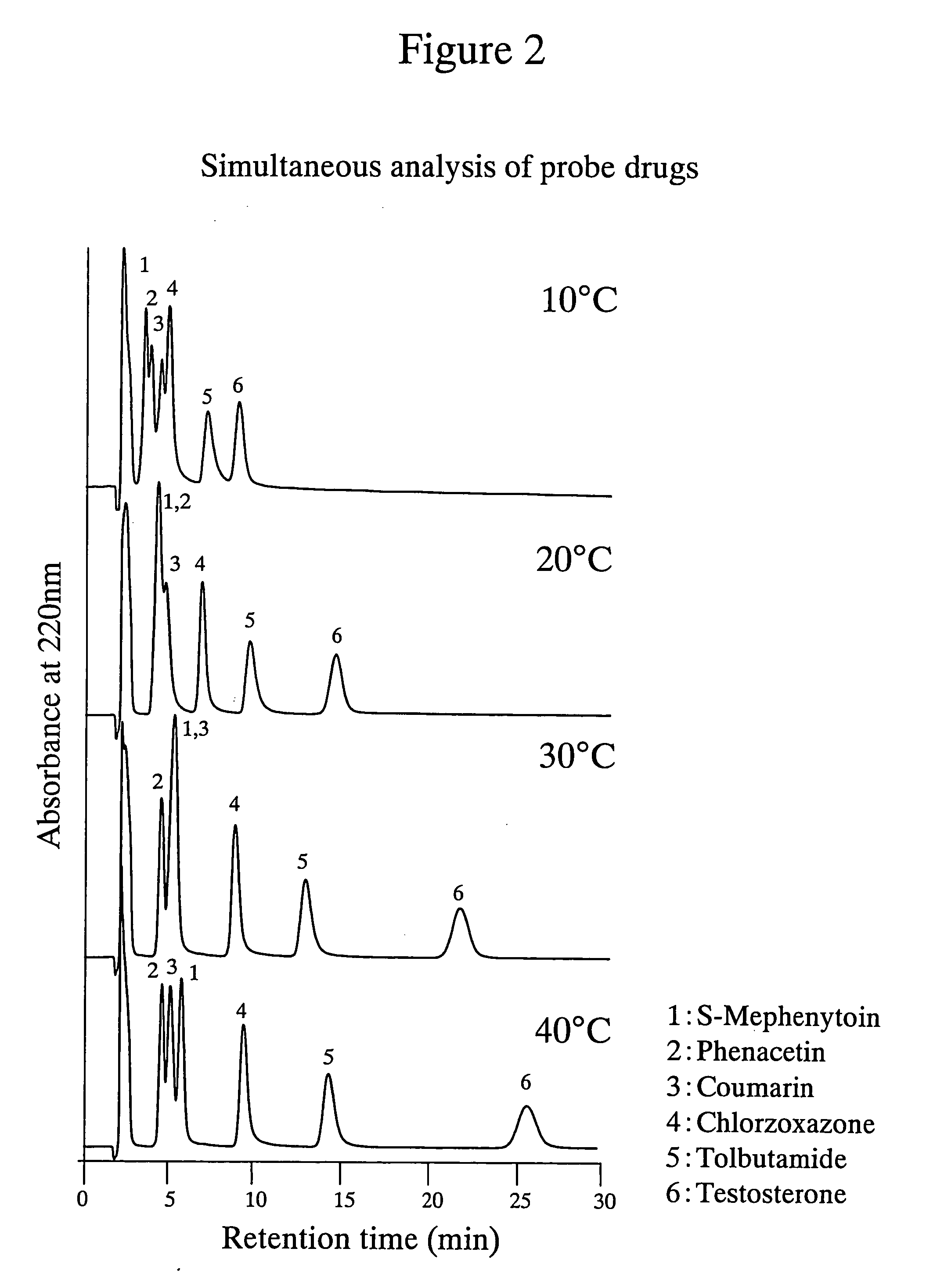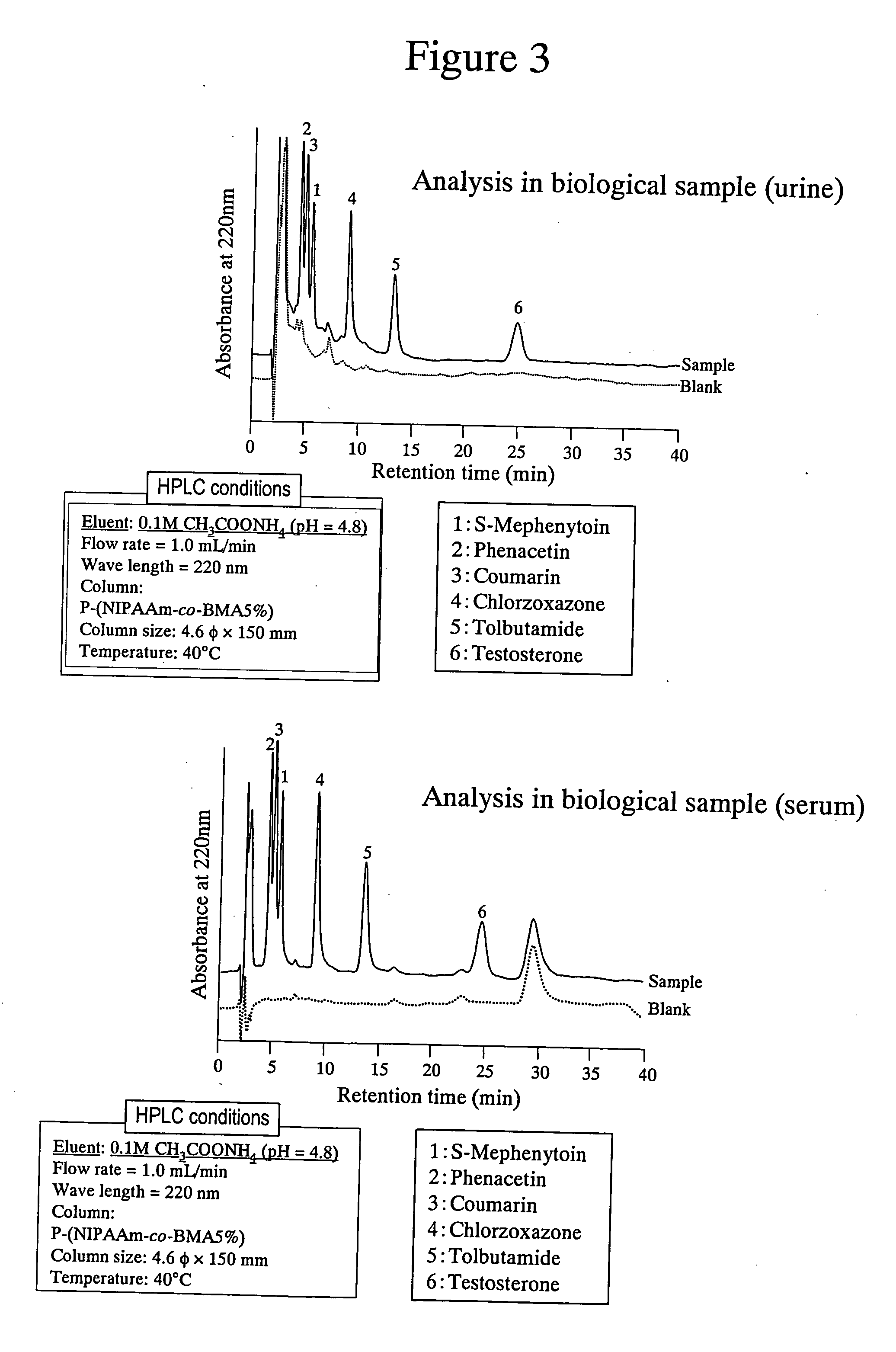Evaluation system for drug-metabolizing capacity and use thereof
a technology of drug metabolizing capacity and evaluation system, which is applied in the field of new evaluation system for drug metabolizing capacity, can solve the problems of increased cost, increased analysis time, and increased detection difficulty, and achieves significant reduction in baseline stabilization and detection sensitivity
- Summary
- Abstract
- Description
- Claims
- Application Information
AI Technical Summary
Benefits of technology
Problems solved by technology
Method used
Image
Examples
example 1
(a) Synthesis Procedures for Poly(N-Isopropylacrylamide) Having a Carboxyl Group at One End
[0030] N-Isopropylacrylamide (20.0 g), 3-mercaptopropionic acid (0.09 g) and 2,2′-azobis(isobutyronitrile) (0.21 g) were introduced into a polymerization tube and dissolved by addition of dry N,N-dimethylformamide (50 ml). After freezing under liquid nitrogen, oxygen in the polymerization tube was degassed by a vacuum oil pump and the polymerization tube kept under reduced pressure was soaked in methanol to remove dissolved oxygen in N,N-dimethylformamide. This freezing / degassing operation was repeated three times. After completion of the degassing, the tube was reacted for 20 hours in an incubator at 70±1° C. After cooling to room temperature, the reaction mixture was concentrated under reduced pressure. And then the raction mixture wasadded dropwise to dry diethyl ether to precipitate poly(N-isopropylacrylamide) having a carboxyl group at one end. This precipitate was collected by filtrati...
example 2
[0041] Each of caffeine, warfarin and omeprazole reagents was dissolved in water or THF to give a saturated aqueous solution. Each solution was filtered through a 0.45 μm filter and the resulting filtrate was used as a sample.
Apparatuses Used
Analytical high performance liquid chromatography
Pump (L-7100, HITACHI)
Mobile phase flow rate 1.0 mL / min
Integrator (D-7000, HITACHI)
Column oven (AO-30C, Shodex)
Packing material (poly-(N-isopropylacrylamide)-immobilized packing material)
Results
[0042] Each of the caffeine, warfarin and omeprazole samples was separated by analytical high performance liquid chromatography and the retention time was measured for each sample at 10° C. and 50° C. with UV wavelength indicated below.
Caffeine (mobile phase: water) (UV=275 nm)
S-Warfarin (mobile phase: water) (UV=302 nm)
Omeprazole (mobile phase: water) (UV=302 nm)
[0043] The results obtained are shown in Table 3.
TABLE 3Table Retention times at 10° C. and 50° C.Retention time(min)10°...
example 3
[0046] The poly-(N-isopropylacrylamide)-immobilized packing material shown in Example 1 was used to simultaneously analyze a mixed sample of 6 probe drugs. Phenacetin (1A2), tolbutamide (2C9), S-mephenyloin (2C19), testosterone (3A4), coumarin (2A6) and chlorzoxazone (2E1) were prepared at the concentrations indicated in Table 4 using THF as a solvent. The structural formulae of these probe drugs are shown in Table 5. The results obtained are shown in FIG. 2. As can be seen from FIG. 2, it is indicated that using the poly-(N-isopropylacrylamide)-immobilized packing material of the present invention enables the separation of useful probe drugs and that individual signals are more successfully separated at a higher separation temperature.
TABLE 4Probe drugPhenacetinTolbutamideS-MephenytoinTestosteroneChlorzoxazoneCoumarinConcentration0.250.250.250.50.250.25(mg / mL)Mixing ratio11311.51.5
[0047]
TABLE 5Structures of CYP probe drugsStructural formulaM.W.logPPhenacetin (CYP1A2)179.220.985(S...
PUM
| Property | Measurement | Unit |
|---|---|---|
| temperature | aaaaa | aaaaa |
| temperature | aaaaa | aaaaa |
| temperature | aaaaa | aaaaa |
Abstract
Description
Claims
Application Information
 Login to View More
Login to View More - Generate Ideas
- Intellectual Property
- Life Sciences
- Materials
- Tech Scout
- Unparalleled Data Quality
- Higher Quality Content
- 60% Fewer Hallucinations
Browse by: Latest US Patents, China's latest patents, Technical Efficacy Thesaurus, Application Domain, Technology Topic, Popular Technical Reports.
© 2025 PatSnap. All rights reserved.Legal|Privacy policy|Modern Slavery Act Transparency Statement|Sitemap|About US| Contact US: help@patsnap.com



